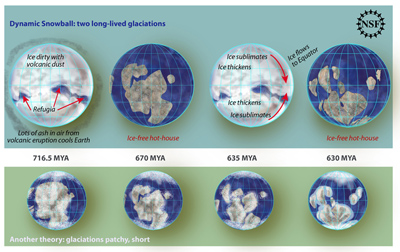There are two ideas about how glaciers formed on Earth during the time known as “Snowball Earth” more than 630 million years ago. The idea that there were two times when glaciers grew worldwide is likely based on the evidence we have today. This idea is described in the top half of the image.
Click on image for full size
Credit: Zina Deretsky, National Science Foundation
Scientists Find Signs of “Snowball Earth” Amidst Early Animal Evolution
Near the Earth’s equator is where you could find some of the warmest places on Earth. But it wasn’t always like that. It used to be cold at the equator, so cold that ice formed on land and in the ocean. That was during a time more than 700 million years ago known as Snowball Earth.
Scientists have discovered there used to be sea ice floating on the ocean near the equator during Snowball Earth. The geologists studied ancient tropical rocks and found evidence that ice was floating in the sea at the time when they formed. Of course, ice is not preserved in the rocks. It melted long ago. Instead, scientists find evidence of ice in the rocks. Sometimes this evidence is pieces of rock that have been scratched by glaciers or pieces of rock that were carried out to sea in ice and then dropped to the bottom of the sea as the ice melted.
Living on Snowball Earth must have been hard. At the time there were not the same types of creatures living on Earth. But, according to fossils, all of the major groups within the Domain Eukaryota (except perhaps animals) existed when the ice formed. And animals may have evolved during this chilly time.
And life did survive during this time. So the things that life needs, like sunlight and water, must have been somewhere on Earth. The scientists say that it is likely that there would have been patches of open water within the ice on the ocean. These open patches would have been places where marine life could survive.
Last modified May 24, 2010 by Lisa Gardiner.
You might also be interested in:
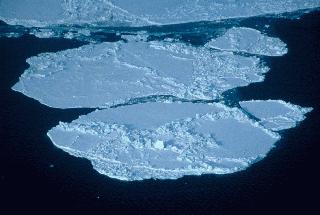
Sea ice is frozen seawater. It floats on the oceans that are in Earth's polar regions. The salt in the seawater does not freeze. Very salty water gets trapped in the sea ice when it forms. The pockets
...more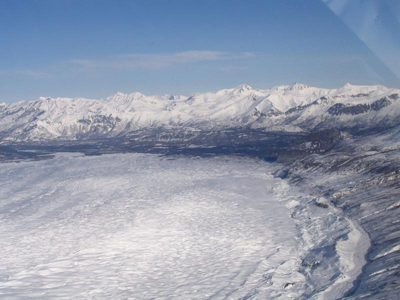
This page is not yet developed at the elementary level. Please check back for updates or click on the "Intermediate" button above for information.
...more
Scientists have learned that Mount Hood, Oregon's tallest mountain, has erupted in the past due to the mixing of two different types of magma. Adam Kent, a geologist at Oregon State University, says this
...more
The Earth's mantle is a rocky, solid shell that is between the Earth's crust and the outer core. The mantle is made up of many different reservoirs that have different chemical compositions. Scientists
...more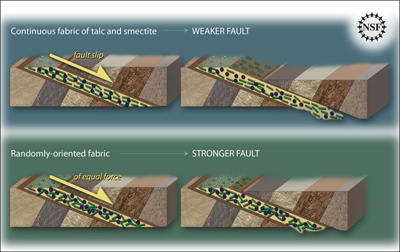
Some faults look strong and like they wouldn’t cause an earthquake. But it turns out that they can slip and slide like weak faults causing earthquakes. Scientists have been looking at one of these faults
...more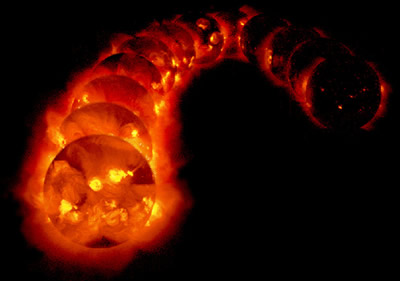
The sun goes through cycles that last approximately 11 years. These solar cycle include phases with more magnetic activity, sunspots, and solar flares. They also include phases with less activity. The
...more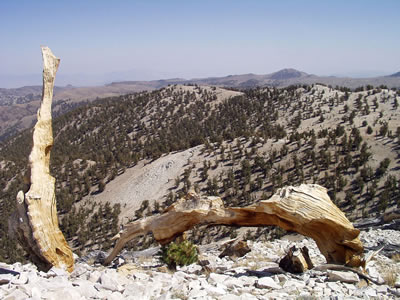
Studying tree rings doesn't only tell us the age of that tree. Tree rings also show what climate was like while the tree was alive. This means that tree rings can tell us about climates of the past. Two
...more


